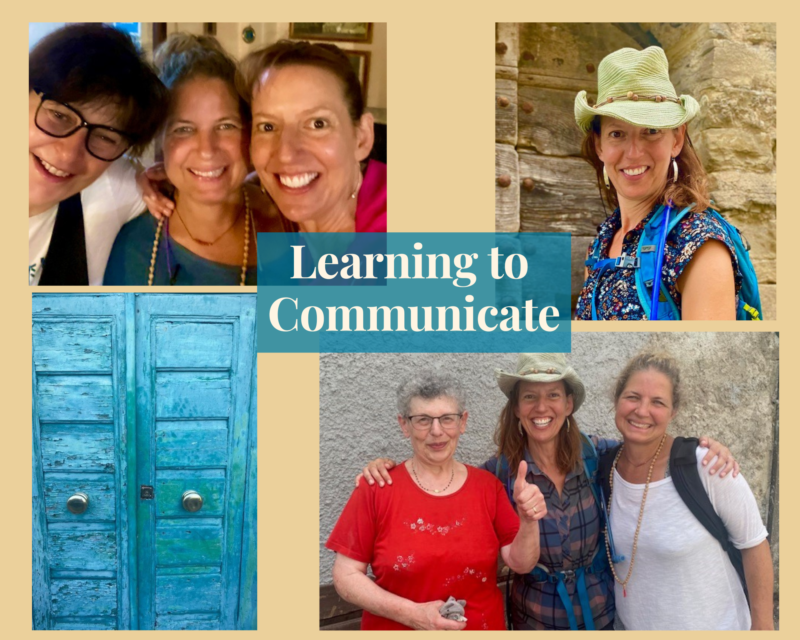The Law Firm At Its Best: Strategic Planning

by Katie Wittekind View Bio
Written by Julie Lancaster and Katie Wittekind
Lancaster Leadership 2023
Modern employees want three things from their careers besides pay and benefits.1
- Purpose
- Growth
- Community
Yet many employers still believe that employees only want good pay and benefits. If the pay and benefits are great, the employee might stay, but will they be doing their best work? Research suggests no. Employees are more likely to be at their best when they experience purpose, growth, and community at work. To accomplish this, organizations should consider a people-first approach. According to Firms of Endearment, employers who put people first soar above competitors in performance, innovation, and profit.2 This article describes how law firms can take a people-first approach through strategic planning, leadership training, and culture initiatives.
The Challenge
The legal profession has developed a culture where billable hours and competition are at the forefront of the industry. Compensation may be high for many lawyers, but depression is 20% higher among lawyers compared to the general population.3 Why? It is common for mid-sized to large law firms to have developed a highly competitive environment where the attainment of billable hours is the ultimate goal. The more you work, the more valuable a lawyer you are in the firm. Valuable lawyers become partner at the firm and are thrown into leadership positions. Leadership requires time to think strategically, develop leadership skills, create succession plans, and create a people-first strategy to reduce turnover. However, the expectation for billable hours remains the same. With no leadership training, leaders are to support the firm’s lawyers. With no time to carry out the leadership duties, the only answer is to work more hours that are not billable. This often leads to family conflict, low life satisfaction, depression, anger, anxiety, sleep issues, and weight gain.4 This downward spiral can trigger work addiction, burnout, and suicide among lawyers.5
With a people-first strategy, law firms can meet modern employees’ desires, reduce their associates’ turnover, increase their lawyers’ job satisfaction, and increase their profits. The obvious question is, what does a people-first strategy look like in a law firm?
Strategy: Aligning with Purpose
Law firms can address many of the challenges associated with the industry by first taking a step back and investing in a strategic plan. Law firms have an increased ability to identify goals as well as assess and prioritize the initiatives needed to best meet those goals with a strategic plan. To incorporate a people-first approach, we at Lancaster Leadership recommend the following twist on traditional strategic planning approaches.
A traditional strategic planning approach will ensure that the mission & vision are created and aligned with current goals and values to set the direction for future decision-making. A people-first strategy will emphasize a mission focused on goals and values beyond making a profit.6 A people-first law firm will position the well-being of its lawyers, associates, and clients as a primary goal that will drive initiatives. For example, a people-first law firm may provide social gatherings for lawyers and clients to foster a greater sense of belonging and community.
The firm can create a people strategy for recruitment and retention with a values-based mission, vision, and goals. As recommended by Jack Altman, author of “People Strategy: How to Invest in People and Make Culture your Competitive Advantage,” a people-first firm can recreate job descriptions that highlight their values and goals to attract the applicants that most align.1 For this to be effective, the values must be unique to the firm and memorable enough to guide the hiring manager to ask open-ended questions. Hence, applicants divulge their values by sharing their experiences.1 This would mean that the values-based law firm must create values beyond generic words. Instead, values should be prescriptive phrases on how to apply them. For example, suppose an identified value is the willingness to help others on the team or in the community. Instead of “Citizenship” as a value, the value could be phrased as “Helping Others Before Helping Self.” Further, if this were a desired value of the firm, a people strategy would also identify any incentive structures that do not support this value. In this example, a firm might create an affordable compensation fund for non-billable work, such as hours for mentorship, coaching, and community work.
This approach places modern employees’ purpose, community, and growth desires equally important to monetary goals. A 2014 study found that companies that took a people-first approach financially exceeded companies with a traditional method by 331%.2 At Lancaster Leadership, we recommend hiring professionals to ensure your strategic plan accomplishes three main objectives. One, the plan is built upon values and goals that will inform the culture and address the desires of today’s employees in addition to monetary goals. Two, the plan identifies where the organization’s current structure does not support the desired outcomes. Three, the plan identifies strategic initiatives that align with the goals, values, mission, and desired results. A people-first strategic plan will create a workplace where the purpose and impact of the work are felt by employees and clients alike.
Leadership Training for Growth
Exceptional leadership requires a diverse set of skills. Coaching and mentoring skills are needed to foster the growth that modern employees seek. An annual review with a list of improvements no longer meets the firm’s or employee’s needs. Consistent bursts of coaching and mentoring will foster the growth that employees seek. This will translate to increased productivity and performance for the firm.1 Effective communication is another essential leadership skill. Effective communication relies on emotional intelligence, non-defensive communication skills, effectively requesting and providing feedback, and utilizing best practices for conflict conversations. The skill most elusive to many leaders is work culture creation. Work culture is complex. It is improved when the leader follows the best practices for rolling out change, managing the team’s energy, and has the skills for building trust and morale. When developed, these leadership skills will foster growth among the firm’s lawyers to prevent exhaustion at both work and home.
Another leadership skill needed is practical succession planning. This required skill is not limited to law firms. However, there are applications of succession planning that, when missing, create reduced client service, productivity, and profitability for law firms. One example is the need for leaders to train others on successful client hand-offs. In addition, leaders leaving the firm must train and develop new and upcoming partners and managers on the leadership skills mentioned above. Finally, leaders must identify a succession plan to maintain the knowledge and skills within the firm. To develop and retain the firm’s lawyers, a firm should consider using a professional to create a training program to meet the diverse leadership skills needed in the 21st century.
Culture Building for Community
Law firms must measure culture to know if they are improving culture. Often organizations rely on cookie-cutter engagement surveys to measure the organization’s culture if they measure it at all. Law firms should ask themselves; Are your engagement survey questions about the behaviors and attitudes that support your values and goals? Are you asking about different aspects of the culture throughout the year or burdening your employees with a lengthy yearly engagement survey? Are you communicating to employees the actions you are taking due to their feedback? Feedback is best when provided often, so there are no surprises at the end of the year. It is essential to communicate the adjustments made in response to the input from employees. Measuring job satisfaction and purpose is recommended to build a people-first culture. For example, a question on purpose might ask,
“To what extent do you agree with this statement? Leadership acknowledges how I positively impact the firm and the clients.”
A people-first firm will also measure employee engagement, perceived growth and development opportunities, and perceived support by co-workers and leadership. Consider measuring perceptions specific to your organization’s values and strategic initiatives. Create a culture of feedback with a feedback plan. Allow employees to give input monthly with three-to-five questions to answer. With each new initiative you roll out, consider an email poll at the 6-month and 12-month mark. Employees may receive a three-question survey every month, but by the end of the year, the organization will have received feedback on all the crucial areas more than once so that adjustments can be made in real-time for faster results.
An organization’s culture is built upon what the organization values in practice. For example, suppose a value of a law firm is to coach and mentor each other, but no time is given for the behavior without working past 50 hours for unpaid time. In that case, mentoring and coaching are not clear values of the firm. Recognition is a way to reinforce organizational values assuming there is no gap between stated values and values in practice. Create a method for co-workers and leadership to recognize the valued behaviors of the firm, and those values will become embedded in the culture. To further connect lawyers to the impact they have, firms should consider client panels of appreciation.
An employee’s sense of belonging is the foundation of culture and community. The onboarding experience is a powerful way to ensure a sense of belonging among employees.6 Establishing an orientation program that reinforces the firm’s values will foster a sense of community and ensures each new hire knows how to apply the firm’s values.6 Taking the time to think strategically about the onboarding process will save time in the long run by drastically improving retention and productivity. Research by the Brandon Hall Group found that a great onboarding experience can increase new hire retention by 82% and improve productivity by 70%.7 Another method for creating culture and community is to communicate quarterly successes for the firm. The quarterly success update should go beyond monetary gains or case wins. This update might review successes on strategic initiatives, employee recognition, and actions taken on feedback received in addition to meeting financial goals.
Recommendations
We at Lancaster Leadership recommend that organizations struggling with high turnover or burnout put the desires of modern employees front and center in strategic planning, leadership training, and culture initiatives. This people-first approach mimics the design thinking process originating from the technology industry. Design thinking places the end user front and center of all improvements, initiatives, and iterations of the technology that serves them. A significant shift in thinking is required when applied to the business sector. No longer is the employee just serving the employer. Instead, the employer serves the employee by providing opportunities for purpose, growth, and community. In turn, the employee serves the employer with measurable retention, productivity, and profitability increases. Of course, the employee is not the only “end user” a law firm serves. Stakeholders may include clients, customers, investors, community partners, and more. An exceptional strategic plan will consider all the stakeholders with a people-first approach while addressing traditional growth and monetary goals. Leadership training that produces outstanding leaders will address the interpersonal skills needed for a people-first approach while maintaining training on traditional skills like succession planning. At its best, a law firm will foster purpose, growth, and community with strategic planning, leadership training, and culture building. A people-first approach becomes the firm’s competitive advantage.
About The Authors
JULIE LANCASTER
Leadership Development Expert & Master Business Strategist
- Served over 100 direct reports and has provided 900 performance evaluations
- Entrepreneur of the Month, Businesswoman of the Month, and Adjunct Instructor of the Year
- B.A. in International Studies, and an M.A. in Education: Culture, Language & Diversity
- Certified group coach, Myers-Briggs practitioner, Change Style Indicator, and Change Style Navigator facilitator
- Visited, volunteered, or worked in 5 continents, 38 countries, and 42 states
KATIE WITTEKIND, MAPP
Certified Coach, Master Facilitator, Trainer, & Strategist
- Masters of Applied Positive Psychology from the University of Pennsylvania
- Certified Tiny Habits Coach
- Certified Worksite Wellness Program Manager
- 10+ years of executive leadership experience in the government & non-profit sector
- Her coaching/training sessions combine the science of positive psychology, design thinking, and habit research
1 Altman, Jack. People Strategy How to Invest in People and Make Culture Your Competitive Advantage. Wiley, 2021.
2 Sisodia, R., Wolfe, D. & Sheth, J. (2014). Firms of endearment (2nd ed.). Upper Saddle River, NJ: Pearson Education.
3 Daicoff, S. S. (2004). Lawyer, know thyself: A psychological analysis of personality strengths and weaknesses. Washington, D.C.: American Psychological Association.
4 Sussman, S. (2012). Workaholism: A review. Journal of Addiction Research & Therapy, 6(1), 1- 18.
5 Mauney, C.S. (n.d.). The lawyers’ epidemic: Depression, suicide and substance abuse. Retrieved from http://www.charlestonlaw.edu/charlestonSchoolOfLaw/files/27/274463ca-476c40cd-9c0a-733676db3cb5.pdf.
6 Pratt, M. G. & Ashforth, B. E. (2003). Fostering meaningfulness in working and at work. In K. S. Cameron, J. E. Dutton, & R. E. Quinn (Eds.), Positive organizational scholarship: Foundations of a new discipline (pp. 307-327). San Francisco, CA: Berrett-Koehler Publishers, Inc.
7 Laurano, M. (2015). The trust cost of a bad hire: Research brief. Retrieved from https://b2b-assets.glassdoor.com/the-true-cost-of-a-bad-hire.pdf
MORE BLOG POSTS
Learning to Communicate
BEING SCRAPPY I love learning languages. In college I took all the offered classes of Spanish and Swahili, and later, plastered my outhouse in the Peace Corps with weekly updated …
Do you need mediation?
How do you handle disagreements between employees or, worse yet, between an employee and supervisor? One option is to offer mediation. Giving the warring parties space to talk and be …


